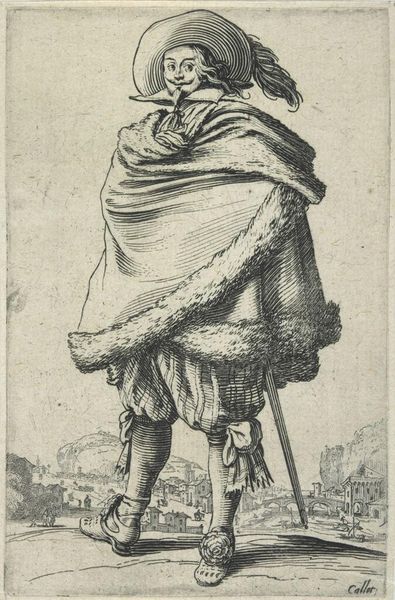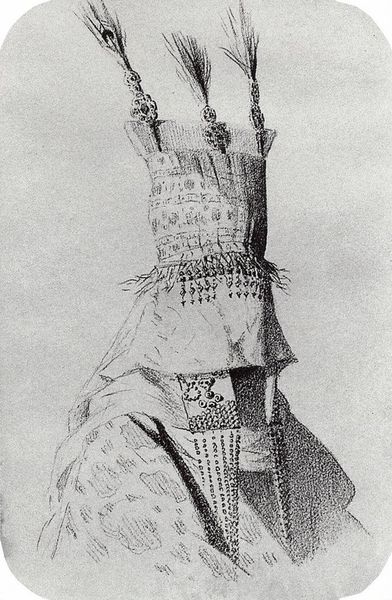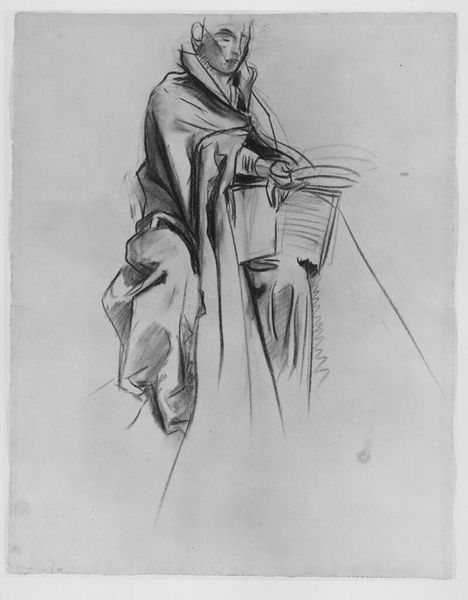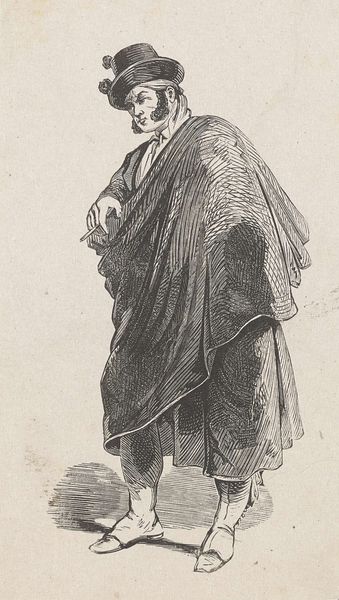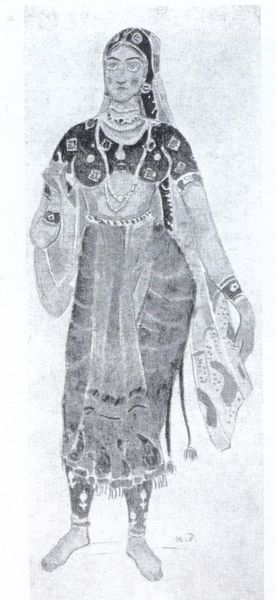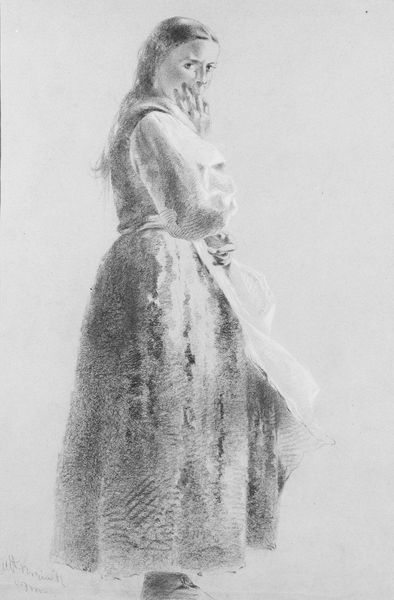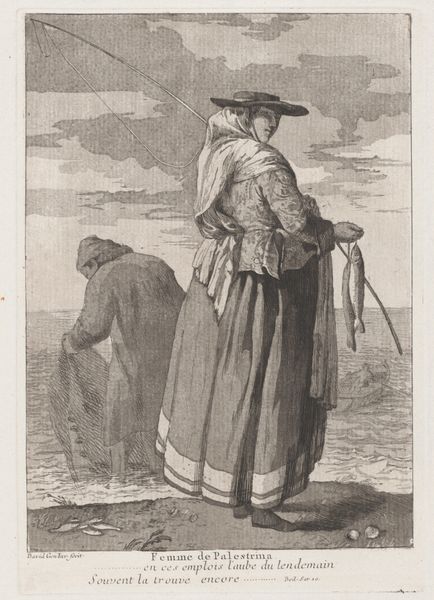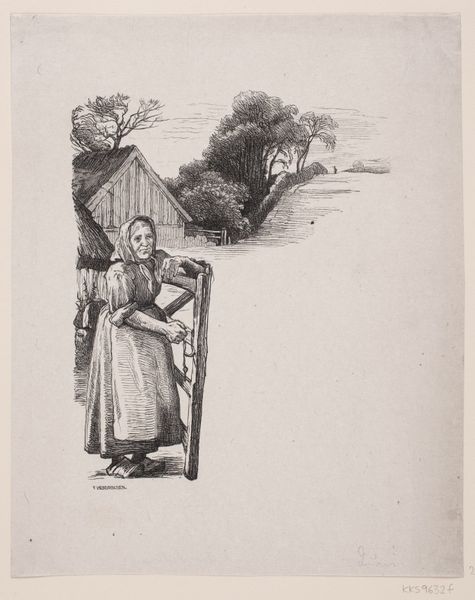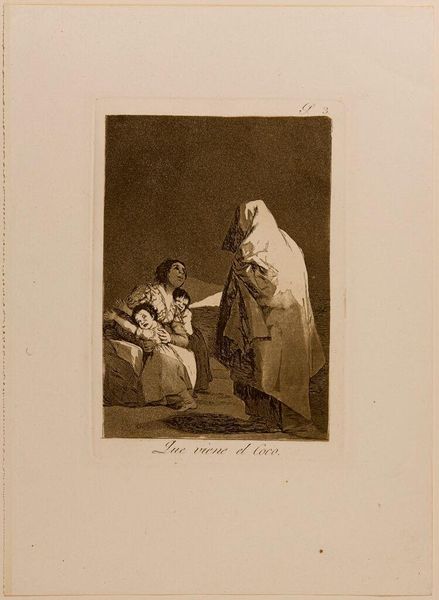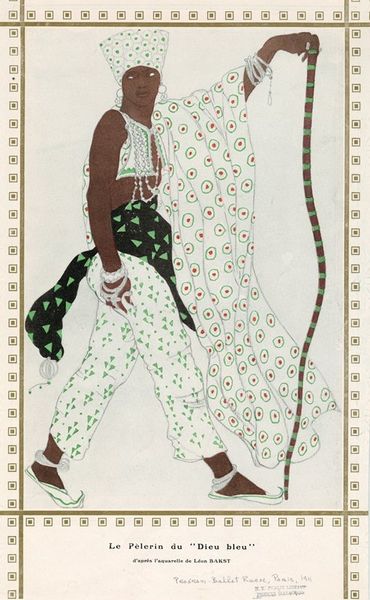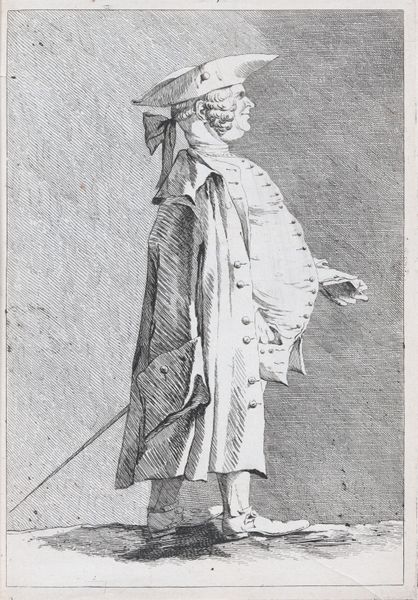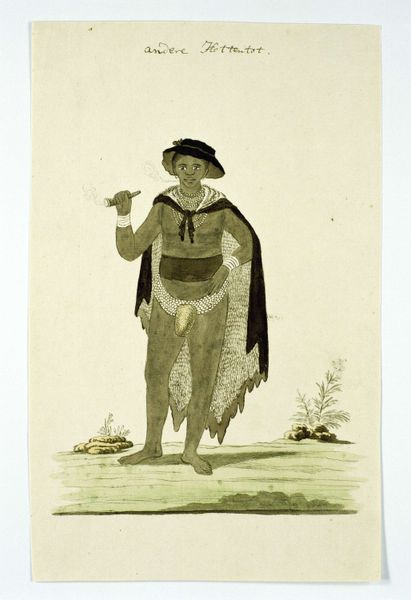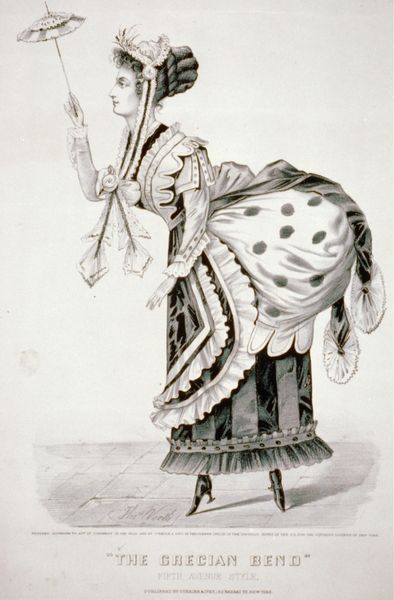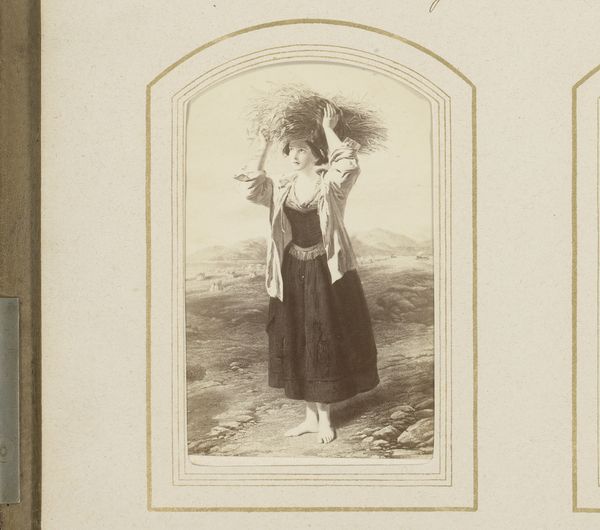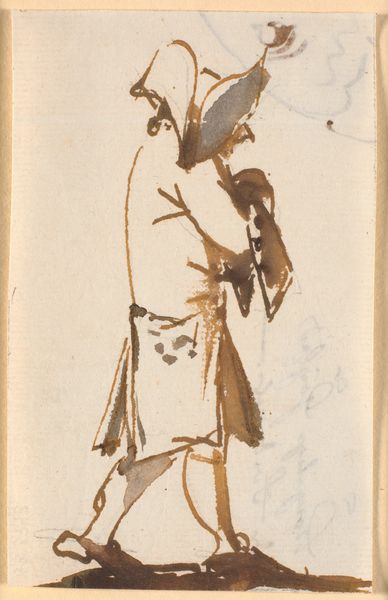
drawing, graphite, pastel
#
portrait
#
drawing
#
landscape
#
charcoal drawing
#
pencil drawing
#
orientalism
#
graphite
#
pastel
#
academic-art
#
graphite
#
realism
Dimensions: 49.5 x 34.3 cm
Copyright: Public domain
Curator: We are looking at “On the alert” by Carl Haag, made in 1876, employing graphite, charcoal, and pastel. Editor: It feels…suspended. The monochrome palette, the figure’s stillness – a moment held between breaths, maybe? The whole scene feels light, even weightless despite the presence of the camel and its pack. Curator: Haag’s meticulous technique certainly contributes to that feel. Consider the materiality – the graphite and charcoal likely yielded those incredibly fine lines, capturing texture. The choice to work on paper – readily transportable and easily marked – says much about the demands of sketching in the field, emphasizing speed and availability. Editor: True, you feel the hand, but there’s also something about his use of negative space, leaving so much unrendered, which elevates the man, doesn't it? A man almost lifted by a gentle desert breeze. Curator: Indeed. And that elevation reflects larger colonial power dynamics, of European portraiture of "exotic" people, especially around North Africa. It presents an aesthetic framing of laborers in the Middle East. The paper wasn’t just something convenient to sketch on; its availability represents established trade routes for importing artist’s supplies to sites where resources may not be indigenously produced, impacting how Haag was working there. Editor: Hmm, yes I see that now, thank you. Still, for me, Haag somehow communicates respect—not a sterile documentation, but an almost collaborative portrayal of a proud guard, he and his camel on a mission. His presence exudes this profound calm and a grounded understanding. The guard is aware. Curator: You have a romantic perspective. Haag presents viewers with carefully selected details meant to inspire wonder and admiration while neglecting more relevant socio-economic circumstances related to art production in a time of colonization. But perhaps now that our dialogue comes to an end, each of us must examine our respective readings of Haag's work and its role in shaping larger cultural perceptions, so thank you! Editor: A provocative way to conclude! Thank you!
Comments
No comments
Be the first to comment and join the conversation on the ultimate creative platform.
